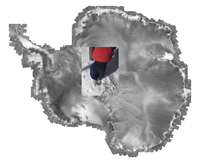xavier cortada
art gallery
|
projects
|
profile
|media
|
calendar
|
email
|
home
profile
bio
| exhibits |
commissions | statement
ARTIST'S STATEMENT
My work (see
projects) aims to challenge us to find
deeper meaning in our present lives by exploring the paths of those who came
before us and our relationship to the natural world.
In 2006, I created Absence of Place, a photo installation at the Miami
Art Museum. In it 180 present-day images of absent Miami structures were
printed on yellow-card stock and hung in plastic bags. On the wall, beneath
each photo I wrote a caption of a memory generated at that site. I did so to
give context to the new building at the site -- and to give the now absent
building life in our collective memory.
Other pieces explore our ability to coexist with nature: In The Reclamation
Project, I hung 252 mangrove seedlings (in plastic, water-filled cups) at
the Bass Museum and worked with volunteers to place another 2500 across South
Beach, `reclaiming` an island that once a lush coastal ecosystem thriving with
mangroves. A follow-up urban reforestation eco-art effort, Native Flags,
is currently being implemented through the Miami Science Museum to re-grow
Miamiís native tree canopy. Both challenge us to seek ways to coexist with the
nature.
 In January 2007, as a National Science Foundation Antarctic Artists and
Writers Program grantee, I traveled to the South Pole to create site-specific
installations about our interconnectedness to one other and our planet: In
The Longitudinal Installation, I arranged 24 shoes in a circle around the
South Pole as a proxy for those affected by global climate change in the world
above.
In January 2007, as a National Science Foundation Antarctic Artists and
Writers Program grantee, I traveled to the South Pole to create site-specific
installations about our interconnectedness to one other and our planet: In
The Longitudinal Installation, I arranged 24 shoes in a circle around the
South Pole as a proxy for those affected by global climate change in the world
above.
In the 150,000-year Journey, I used a moving ice sheet to mark
time: I planted a mangrove seedling at the South Pole, embedded in the ice it
will ride for 150,000 years towards the waters edge where, theoretically, it
will set its roots. The piece addresses the travails of an immigrant's journey
--- the displacement, the solitude, the struggle to simply integrate oneself
into society.
In a more universal way, the 150,000-year
Journey, explores humankind as it evolves through time. It will take almost
150,000 years for this art piece to be completed. What will our world look
like then? Juxtaposing Antarctica's geological time frames with human time
frames (see The Markers, which uses flags to mark the movement of the
ice sheet during the past 50 years, when humans first inhabited the South
Pole), my art reaffirms the notion that we are simply custodians of the planet
who should learn to live in harmony with nature.

|
xavier cortada
art gallery
|
projects
|
profile
|media
|
calendar | email
|
home
|
|
Xavier
Cortada's work has been shown across the Americas, Europe, Africa and
Antarctica and locally in the Miami Art Museum, the Miami Museum of
Science & Planetarium and the Bass Museum of Art. The Miami artist has
been commissioned to create art for the White House, the Florida Supreme
Court, Miami City Hall, the Museum of Florida History and the Amundsen-Scott
South Pole Station.
Cortada's work is also in the permanent collection of The World Bank.
For more information, please visit
http://www.cortada.com.
|
|
 In January 2007, as a National Science Foundation Antarctic Artists and
Writers Program grantee, I traveled to the South Pole to create site-specific
installations about our interconnectedness to one other and our planet: In
The Longitudinal Installation, I arranged 24 shoes in a circle around the
South Pole as a proxy for those affected by global climate change in the world
above.
In January 2007, as a National Science Foundation Antarctic Artists and
Writers Program grantee, I traveled to the South Pole to create site-specific
installations about our interconnectedness to one other and our planet: In
The Longitudinal Installation, I arranged 24 shoes in a circle around the
South Pole as a proxy for those affected by global climate change in the world
above.